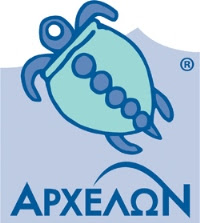By now, everyone has heard of article marketing and so many people define it in so many different ways that it's hard for people new to article marketing to understand.
First of all, most of the SEO gurus caught on to article marketing late in the game, then scrambled to create their own definitions of it at the last minute, so it doesn't appear they were ever unaware of the power of article marketing.
In general, article marketing means that you write an article on a topic related to the subject of your website. This is not a promotional article for your website, but an article about something that is informative for the reader. In the article, use keywords and phrases that relate to your topic, just as you would optimise a website. When your article is printed, it will be the text of one or more websites.
In the author biography at the end of the article you will find some information about you and links to your website. It is recommended to include a link to your main page and one to an inner page that matches the article you have written.
If your article is published on websites that accept article submissions and offer free content to webmasters, and the webmasters decide to republish your article on their websites, the links in the author section will become links from their websites to your website.
Now let's move on to the myths and facts about article marketing.
MYTH: Article marketing doesn't really help you.
FACT: Article marketing can help you increase your link popularity and be a source of targeted traffic that you can get.
MYTH: Reprinted articles are only indexed as supplementary pages, so it doesn't help enough to make it worthwhile.
FACT: Depending on where the article is submitted, the article itself can be listed in the top 10 of the most important search engines and not just as an additional page.
MYTH: If you submit your article everywhere, you will create duplicate content and the search engines will penalise or demote these pages.
FACT: If search engines penalised duplicate content as the myth suggests, then all RSS feeds that result in a post being duplicated on a blog would be devalued or published, which is not the case. The New York Times and CNN articles are distributed all over the web and are not penalised or devalued.
Duplicate content is two web pages that are about 70 % similar, not two web pages that contain similar text.
MYTH: Article marketing only works if you write an article and then send it to thousands of websites that publish articles.
FACT: There is more than one way to make article marketing work for you. The method mentioned above works well if you want to get lots of links to your website, whether they are related to your website or not, and it can be effective if you currently have very little or no link popularity.
Another option is to submit your article by hand to sites that only accept articles related to your topic. This is more difficult, but the links will help you more through the submissions and it's more likely that the sites that pick up and republish your article will also be related to your topic, which can help you get better links and targeted traffic.
Another option is to write a very high quality article that you really take the time to research. Then choose a very well-visited website that is related to your topic. One that has a lot of PR and a lot of visitors.
Email them your article and offer them an exclusive price if they print your article with your links in the bio. If your article is of good quality and you get an exclusive price, chances are good that they will publish your article there.
If you choose the website on which you publish your article carefully, this one-off publication can achieve more than the mass submission of articles.
Last but not least, publishing your article exclusively on your own website is a great way to add new content, and if the article is good, people will link directly to the article, increasing both traffic and PR for your website where you published the article. However, for this to work, you must already have some traffic.
MYTH: You should always publish your article on your website first and then wait until it is crawled by the search engines before publishing it elsewhere.
FACT: Adding articles to your own website is called adding content. Posting these articles on other websites is called article marketing. With article marketing, you don't want the article to be indexed on your website first.
Yes, you read that correctly. You don't want the article to be indexed on your website first. You are or should already be doing SEO on your website and adding fresh content to your website for the search engines to get traffic from them.
If you submit articles to other websites and the search engines find them there first, you have another gateway for visitors to find your website.
If the websites to which you have submitted your articles are crawled frequently, then your website will also be crawled if your article appears there with intact links.
If the websites you have submitted your article to are well indexed by the search engines, your article could appear in the top 10 results if it is found first on their website.
If you place the article on your own website with no or low PR, it may not be indexed at all.
I hope this article has dispelled some myths about article marketing and helped you understand how and why it works.

transruption.org
The digital toolbox for
the digital winners of today and tomorrow
Business excellence for decision-makers & managers by and with Sanjay Sauldie

transruption: The digital toolbox for
the digital winners of today and tomorrow
Article Marketing myths and facts
written by:
Keywords:
transruptionFollow me on my channels:
Questions on the topic? Contact us now without obligation
More articles worth reading
- 02.12.24: 17:00: Sigmaringen: AI in focus: Recognising opportunities, shaping the future
- KIROI Masterplan: Artificial Intelligence in the Film & Media World (MOVIE MEETS MEDIA, August 2024, Berlin)
- MOVIE MEETS MEDIA 2024, August 24, Berlin: Artificial intelligence in the art of film: redefining creativity for producers, directors, screenwriters and actors
- Step 7 of the KIROI strategy: Practical examples of "Ideas for other departments"
- Step 6 of the KIROI strategy: Practical examples for "Own department - idea development and implementation"















